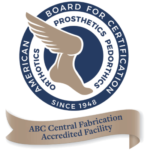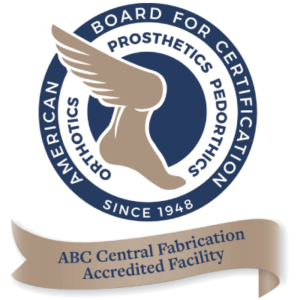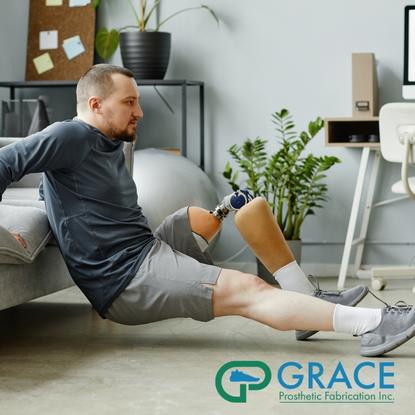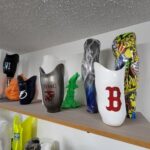Why is 3D printing a great method for creating prosthetic prototypes?
Since Grace Prosthetics has been in business, we’ve seen a lot of advancements that have greatly benefited patients in need of prosthetics. Even now, much of the technology appears to be in its infancy, with new and exciting technologies poised to usher the industry into an era previously reserved for sci-fi films. One of the most exciting technologies in recent years, without a doubt, has been the creation and proliferation of 3D-printing prosthetics.
Here is why this particular advancement is perfect for prosthetic prototypes:
Complex Modeling
Even though the process is called 3D printing, a huge part of it is the actual software that’s involved. The process uses CAD software that allows a complex, detailed, three-dimensional model to be created of the prosthetic prototype. It provides a level of precision that traditional prosthetic creation can’t reach. A designer can look at this 3D model from all sides to see exactly how it will function and whether any changes need to be made before the printing process begins.
Repeated Fabrication
One of the biggest benefits of 3D printing prosthetics is that no mold is involved. All of the information related to the 3D model is stored digitally, which makes it easily accessible. Although this may not seem like a big deal to some patients at first, they’ll really appreciate it when they need a replacement and don’t need to go through the entire prosthetic design process again.
Last-Minute Changes
Whenever a prosthetic is being created for a patient, it’s paramount that the end result is absolutely perfect. After all, you don’t want a patient to wear a prosthetic that doesn’t fit quite right or isn’t to their liking. Prior to printing, the patient will be presented with a 3D preview of what the prosthetic will look like once it’s been completed. They’ll be able to make last-minute changes to certain aspects of the prosthetic, if needed.
Better Time Management
With the traditional creation of a prosthesis, the designer must be hands-on throughout much of the process. Although there is some automation involved, they still need to manipulate it and perform the majority of the labor. By 3D printing prosthetics, once the digital model has been created and the printing has begun, the designer can go to another step of the process or to another project entirely. This allows them much better time management, especially if they have several assignments on their plate.
Less time spent waiting
It’s probably obvious that 3D printing is a much shorter process than doing everything by hand or with several machines. This means that the designer will be able to finish the project faster than they would if the prosthesis had been created in a traditional manner. More importantly, the patient will typically receive their prosthesis in a much shorter timeframe.
Easy Customization
Prosthetics aren’t what they used to be just a few short decades ago. There’s a lot of customization involved given the fact that some patients will need different designs, forms, sizes, and colors. With 3D printing, this is much easier to do than ever before.
The patient can be shown a 3D model preview of what their prosthesis will look like, and then they can have it customized as they see fit. This is great for functionality as well as displaying their personalities.
Great for Young Patients
Whenever a child needs a prosthetic, it can be a very sensitive situation because they’re often very scared and stressed. Since children are constantly growing, they require more prosthetic fittings throughout their lifetime than an adult, since adjustments and even full-fledged prosthetics are required as they get older. With the use of 3D printing, this process can go more smoothly each time.
Contact Grace Prosthetic Fabrication for 3D Printing Prosthetics Assistance
Grace Prosthetic Fabrication is an industry leader who will help ensure that your patients in need of prosthetic sockets and devices are well taken care of. If you’d like to know more about our services or would like to learn what role we play in 3D printing prosthetics, give us a call at (800) 940-5347 today.






